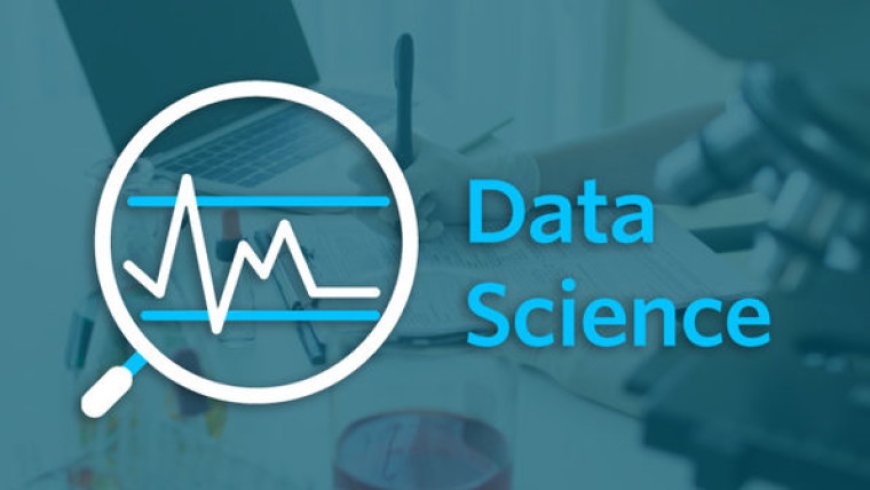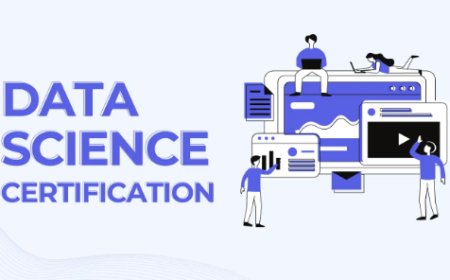Statistics for Data Science: A Comprehensive Guide
Explore the essentials of statistics for data science in this comprehensive guide. Learn key concepts, methods, and applications to enhance your data analysis skills.

In data science, statistics serves as the essential framework for extracting valuable insights from extensive datasets. It forms the backbone of analysis, enabling professionals to summarize data features, make predictions, and assess the significance of findings. By providing a structured approach to data interpretation, statistics ensures informed decision-making and a reliable understanding of patterns within the data. This foundational role underscores the importance of a solid statistical understanding in the practice of data science.
Essential Role of Statistics in Data Science
In data science, which is a fluid discipline, it is essential to extract meaningful insights from enormous databases. Making sense of the data is facilitated by statistical approaches, which offer crucial instruments for precise analysis and interpretation. Statistics is the cornerstone in this field, allowing data scientists to effectively and reliably derive conclusions from intricate information, thereby assisting in making sound choices.
The Importance of Statistics in Data Science
A strong grasp of statistics is crucial when working in the field of data science. Without it, it becomes difficult to form trustworthy inferences, increasing the possibility of erroneous interpretations and poor decision-making. A thorough understanding of statistical concepts is essential for anyone new to the discipline. It acts as the cornerstone for precise analysis, guaranteeing that the inferences drawn from datasets are reliable and support well-informed decision-making.
How do statistical methods contribute to the extraction of meaningful insights from datasets?
Statistical methods distill complex datasets, revealing patterns and relationships. They provide a systematic framework to analyze data, enabling data scientists to draw meaningful insights and make informed decisions based on evidence.
Let’s take a look at each type in a little more depth.
Statistics, in the context of data science, involves the collection, analysis, interpretation, presentation, and organization of data. It provides a framework for making inferences and predictions based on observed patterns. Here are some key reasons why statistics is indispensable in data science:
1. Descriptive Statistics: Descriptive statistics help in summarizing and describing essential features of a dataset, such as central tendency and dispersion. This aids in gaining a clear overview of the data and identifying any patterns or trends.
2. Inferential Statistics: Inferential statistics allow data scientists to make predictions or inferences about a population based on a sample of data. This is particularly useful when working with large datasets where it is impractical to analyze the entire population.
3. Hypothesis Testing: Statistical hypothesis testing enables data scientists to assess the validity of assumptions and draw conclusions about the population from sample data. This is crucial for making data-driven decisions and validating the significance of findings.
4. Regression Analysis: Regression analysis is used to explore the relationship between variables and make predictions. It helps identify key factors that influence a particular outcome, aiding in the development of predictive models.
5. Probability: Probability theory is fundamental in data science, providing a mathematical framework for dealing with uncertainty. Understanding probabilities is essential for making informed decisions and assessing the likelihood of different outcomes.
Why Does Statistics Matter in Data Science?
-
Informed Decision-Making: Statistics enables data scientists to make decisions based on evidence and patterns observed in data.
-
Reliable Insights: It provides tools for accurate analysis, reducing the risk of drawing false conclusions from large datasets.
-
Descriptive Understanding: Descriptive statistics summarize and present key features of data, aiding in understanding and interpretation.
-
Predictive Modeling: Statistical methods, such as regression analysis, help build models to predict future outcomes.
-
Hypothesis Testing: It allows the validation of assumptions and the drawing of conclusions about populations from sample data.
-
Quantifying Uncertainty: Probability theory in statistics helps in quantifying uncertainty, crucial for risk assessment and decision support.
-
Data Exploration: Statistics facilitates the exploration of data, revealing patterns and trends that inform subsequent analyses.
-
Scientific Rigor: A solid statistical foundation adds rigor to the scientific process, ensuring the validity of findings and interpretations.
-
Performance Evaluation: Statistical metrics assess the performance of models and algorithms, guiding improvements and optimizations.
-
Communication of Findings: Statistical methods provide a standardized language for communicating results, enhancing collaboration and understanding.
Statistical Software Used in Data Science
Statistical software is an essential tool for analyzing and understanding big datasets in the constantly developing field of data science. Due to their effectiveness and versatility, several tools are frequently utilized. The following are some important statistical software programs used in data science:
1. R
Description: R is a powerful and open-source programming language specifically designed for statistical computing and graphics.
Features: It offers a vast collection of statistical and mathematical packages, making it a preferred choice for data analysis, visualization, and machine learning.
2. Python (with Libraries such as NumPy, Pandas, and SciPy)
Description: Python is a versatile programming language with extensive libraries that support various statistical and data analysis tasks.
Features: Libraries like NumPy for numerical operations, Pandas for data manipulation, and SciPy for scientific computing enhance Python's capabilities for statistical analysis.
3. SAS (Statistical Analysis System)
Description: SAS is a statistical software suite widely used for advanced analytics, business intelligence, and data management.
Features: It provides a comprehensive set of tools for data manipulation, statistical modeling, and machine learning, making it popular in industries such as finance and healthcare.
4. SPSS (Statistical Package for the Social Sciences)
Description: SPSS is a user-friendly statistical software package often employed in social sciences and market research.
Features: Known for its ease of use, SPSS facilitates data management, statistical analysis, and reporting, making it accessible to researchers and analysts with varying levels of expertise.
5. Excel
Description: Microsoft Excel is a widely used spreadsheet software that includes basic statistical functions.
Features: While not as advanced as dedicated statistical software, Excel is accessible and can perform essential statistical analyses, making it a common choice for quick calculations and simple data exploration.
6. MATLAB
Description: MATLAB is a programming language and environment primarily used for numerical computing and data analysis.
Features: It is popular for its extensive toolboxes that cover various domains, including statistics, making it valuable for researchers and engineers in fields like signal processing and image analysis.
These statistical software tools enable data scientists to effectively manage, analyze, and visualize data, which helps them derive valuable insights and make well-informed decisions in the always-changing field of data science.
The foundation of data science is statistics, which offers an organized method for deriving significant insights from intricate information. A strong understanding of statistical principles is necessary for solid analysis and well-informed decision-making. Essential statistical techniques, such as predictive modeling and descriptive statistics, improve data scientists' capacity to make precise judgments. Using statistical software increases productivity even more and guarantees that experts can confidently and precisely explore The always changing field of data science.











































